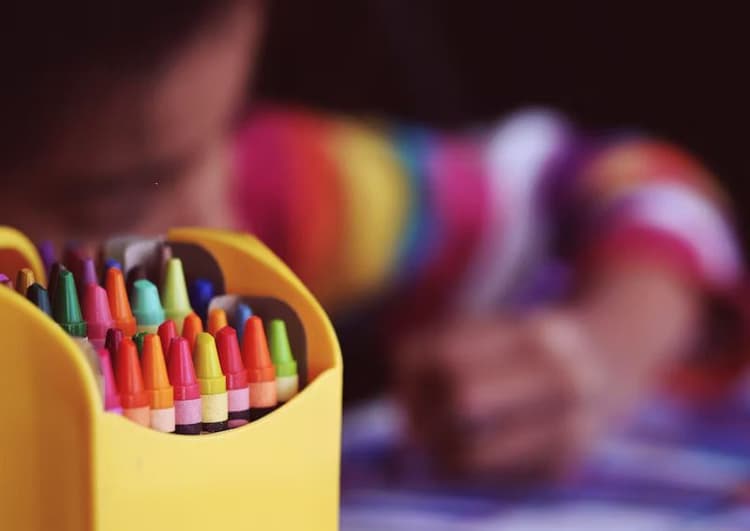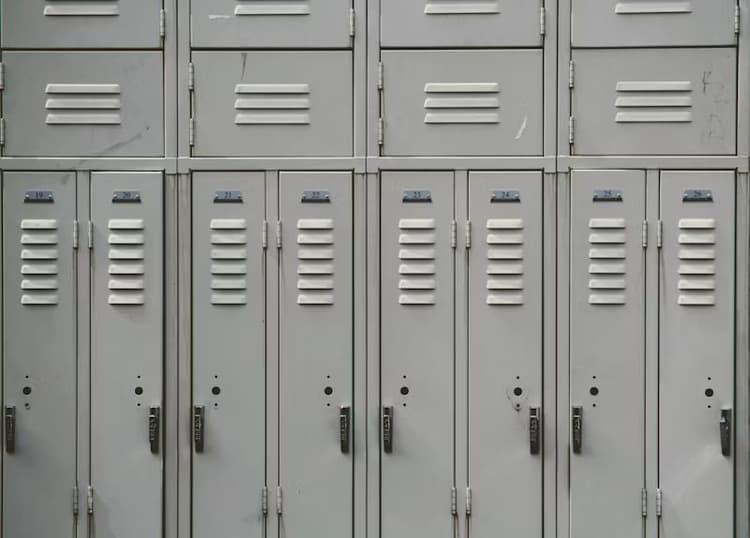
Victoria Schools
Discover Victoria's diverse education system with our comprehensive guide to government, Catholic, and independent schools. Learn about specialized programs, admission processes, and tips for choosing the right school for your child's needs.
Exploring the Different Schools in Victoria: A Comprehensive Guide
Victoria's education system is renowned for its high standards, innovative teaching practices, and commitment to student success. With a wide range of schooling options available, families have the opportunity to choose an educational path that best suits their children's needs and aspirations.
From government schools to independent institutions, each type of school offers unique features and benefits. Understanding the differences between these options can help parents make informed decisions about their child's education.
In this article, we'll explore the various types of schools in Victoria, including government, Catholic, and independent schools. We'll also delve into specialist schools and alternative education options, providing a comprehensive overview of the Victorian school system.
What Are the Different Types of Schools in Victoria?
Victoria's education system is diverse, offering a range of schooling options to cater to the needs and preferences of students and their families. The three main types of schools in Victoria are government schools, Catholic schools, and independent schools.
Government Schools
Government schools, also known as public schools, are the most numerous in Victoria, with over 1,500 schools across the state. These schools are free to attend and open to all students, regardless of background or ability. Government schools follow the Victorian Curriculum and are staffed by highly qualified teachers who are dedicated to providing a well-rounded education.
While most government schools are co-educational, there are some single-sex schools, particularly at the secondary level. These schools may offer specialized programs or facilities to cater to the specific needs and interests of their student population.
Catholic Schools
Catholic schools are the largest group of non-government schools in Victoria, with a focus on religious education alongside the standard curriculum. These schools are typically affiliated with the Catholic Church and may incorporate faith-based values and teachings into their educational approach.
Catholic schools charge tuition fees, but they may offer discounts or financial assistance to families who are members of the Catholic community or who demonstrate financial need. These schools often have strong community ties and may provide additional pastoral care and support services for students and their families.
Independent Schools
Independent schools are non-government schools that operate autonomously, with their own governance structures and educational philosophies. These schools can be either religious or secular in nature and may offer alternative or specialized educational approaches, such as Montessori or Steiner education.
Independent schools charge tuition fees, which can vary significantly depending on the school's location, facilities, and programs. However, many independent schools offer scholarships or bursaries to eligible students based on academic merit, sporting or artistic talent, or financial need.
Understanding the Victorian School System
The Victorian school system is structured into primary and secondary levels, with education being compulsory for children aged 6-17. Students typically spend seven years in primary school (Prep to Year 6) and six years in secondary school (Years 7-12).
One of the key features of the Victorian school system is its commitment to providing a high-quality education for all students. Schools in Victoria benefit from smaller class sizes and better student-teacher ratios compared to the OECD average, allowing for more individualized attention and support.
Victorian schools also boast highly skilled and dedicated teachers who are passionate about inspiring and supporting their students. These educators work hard to create innovative learning environments that enhance the educational experience and promote student engagement and achievement.
Understanding the Victorian School System
Victoria's educational landscape is characterized by its structured approach, with a seamless transition from primary to secondary education. This system ensures that students receive a comprehensive education that spans 13 years, starting from the foundational years in primary school up to the more specialized subjects in secondary school. The Victorian Curriculum is central to this, providing a framework that encompasses a diverse range of subjects designed to foster intellectual, physical, and emotional development in students.
Key Features of Victorian Schools
Victorian schools are renowned for creating environments that prioritize student engagement and learning efficiency. A crucial feature is the emphasis on individualized learning plans, which allow teachers to tailor educational strategies to meet diverse student needs. With a favorable teacher-to-student focus, educators can offer targeted support and adaptive learning experiences that cater to varied learning styles.
The commitment to teaching excellence in Victoria is evident through continuous professional development opportunities for educators. Teachers are encouraged to integrate creative and technology-driven teaching methods, which enhance classroom interaction and student participation. This is supported by modern facilities in many schools, designed to provide flexible and motivating spaces for learning.
International students in Victoria benefit from comprehensive support networks that facilitate their integration into the school system. Schools provide specialized language programs aimed at achieving linguistic competence and offer resources such as cultural advisors who assist students in adapting to their new environment. These initiatives help ensure that international students feel welcomed and equipped to thrive academically.
Exploring Government Schools in Victoria
Government schools in Victoria are integral to the educational landscape, providing widespread educational access across the state. Home to over 1,500 institutions, these schools form the foundation of Victoria's public education. Funded by the government, they offer education at no direct cost to families, ensuring that financial barriers do not hinder access to learning. This open policy welcomes a rich tapestry of students from diverse cultural and socio-economic backgrounds, enriching the educational experience for all.
Diversity and Accessibility in Government Schools
The majority of government schools operate as co-educational institutions, fostering an environment where boys and girls learn together. However, there are a few single-sex schools within the system, particularly at the secondary level, which provide options aligned with specific educational preferences. This variety allows families to select a school environment that resonates with their values and needs. Furthermore, these schools boast a wide array of extracurricular activities—from sports to arts and STEM—that contribute to a well-rounded education.
Selective Entry High Schools
Selective entry high schools represent a unique segment within the government school system, focusing on students with high academic potential. Schools like Melbourne High School and MacRobertson Girls' High School are tailored for students who excel in academic pursuits, offering admission based on stringent entrance examinations or auditions. Prospective students must reside within designated geographic zones, ensuring localized access to these specialized programs.
These schools provide an enriched curriculum that often includes advanced learning opportunities and resources designed to challenge and inspire gifted students. By emphasizing academic excellence, selective entry high schools play a pivotal role in preparing students for higher education and future success, reflecting Victoria's commitment to nurturing diverse educational needs and talents.
Understanding Non-Government Schools in Victoria
Victoria's non-government schools present a wide spectrum of educational choices, accommodating diverse family preferences and values. These schools, including Catholic and independent institutions, often integrate specific educational philosophies or cultural values into their frameworks, offering tailored learning experiences.
Catholic Schools
In Victoria, Catholic schools hold a prominent place within the non-government sector, emphasizing a blend of academic learning and spiritual growth. They incorporate teachings aligned with Catholic traditions, aiming to nurture both the intellectual and ethical development of students. While these schools levy tuition fees, they frequently provide financial support options, making education attainable for a diverse demographic. Their approach typically involves strong familial and community partnerships, creating a cohesive and supportive atmosphere for education.
Independent Schools
Independent schools in Victoria are distinguished by their distinctiveness and self-governing nature, offering a range of educational experiences from small, innovative environments to well-established, renowned institutions. Each school has the autonomy to design its own curriculum, allowing for diverse pedagogical strategies.
- Educational Approaches: Certain independent schools employ alternative educational models, such as inquiry-based or experiential learning, which prioritize student engagement and critical thinking. These methods attract families interested in innovative educational settings.
- Cultural and Ethical Values: Many independent schools are associated with specific cultural or ethical values, offering environments that resonate with particular family beliefs. This includes schools with affiliations to various religious and philosophical traditions, providing comprehensive educational experiences that align with family values.
The diverse array of non-government schools in Victoria enriches the educational landscape, ensuring that families can find institutions that align with their children's needs and aspirations.
Specialist Schools and Alternative Education Options
Victoria's educational offerings include a variety of specialist schools designed to meet the diverse needs and interests of students. These institutions provide focused programs that address specific educational requirements, ensuring that every child finds a suitable learning environment. For students with unique learning challenges, schools specializing in support for disabilities offer tailored resources and teaching methods. These schools emphasize creating inclusive settings where all students can achieve academic and social success.
Performing arts schools cater to students with a passion for music, dance, theater, and other artistic fields. These institutions blend rigorous academic instruction with intensive arts training, allowing students to develop their creative talents alongside strong academic foundations. By fostering environments that celebrate artistic expression, these schools contribute significantly to nurturing the next generation of creative professionals.
Specialized and Flexible Learning Opportunities
Victoria's educational landscape also includes advanced learning opportunities through specialized programs like Select Entry Accelerated Learning (SEAL). These initiatives offer enriched curricula that challenge students to excel academically beyond traditional standards. With a focus on expanding intellectual capabilities, SEAL programs prepare students for future academic pursuits. Entry into these programs involves a selective process, ensuring participants are suited to the accelerated pace and content.
Flexible learning options are available through distance education, such as those offered by Virtual School Victoria. This approach is ideal for students who cannot attend conventional classes due to geographical, health, or personal reasons. Utilizing online platforms and digital resources, distance education enables students to access quality learning experiences from any location, supporting a diverse range of educational needs.
Language and Cultural Education
Victoria emphasizes the importance of multilingual proficiency, recognizing its value in a globalized world. Many schools feature comprehensive language programs, which include instruction in both English and additional languages. These programs foster cognitive development and cultural understanding, equipping students with essential skills for future endeavors. Language schools offer instruction in non-English languages outside regular school hours, promoting linguistic diversity and cultural heritage preservation within the community.
For international students, Victoria provides a variety of schools with support systems tailored to their needs. These institutions offer English language assistance, cultural integration resources, and specialized programs to ensure a smooth transition into Victoria's education system. By addressing the unique requirements of international learners, these schools facilitate successful educational experiences in a new environment.
Choosing the Right School for Your Child
Selecting the most suitable school for your child involves careful consideration of several key elements that shape their educational journey. A primary factor is the school's geographical location—being close to home can simplify daily commutes and enhance convenience. Beyond mere accessibility, it's important to examine the school's educational philosophy, ensuring it resonates with your family's beliefs and expectations. Whether you're inclined towards a conventional curriculum or a more innovative approach, understanding the school's pedagogical stance can inform your choice.
Academic standing and the breadth of extracurricular programs are crucial in evaluating a school's fit. Investigating a school's academic achievements offers insight into its dedication to quality education and student success. Extracurricular activities, from sports to arts and clubs, play a vital role in nurturing skills such as collaboration, leadership, and creativity. Assessing these opportunities helps determine if the school provides a comprehensive and stimulating environment conducive to your child's holistic development.
Engaging with the School Community
Understanding the school's community through direct interaction is a valuable step in the decision-making process. Participating in open days and school tours allows you to experience the environment firsthand and connect with teachers, students, and staff. These engagements reveal the school's ethos and communal spirit, aiding in assessing its alignment with your family's aspirations and your child's interests.
Dialoguing with your child is equally important. Gaining insight into their preferences, passions, and learning style can steer you towards a school that fosters their growth and ambitions. Encouraging your child to express their viewpoints ensures they feel involved and enthusiastic about their educational path.
Resources for Further Information
To assist in making an informed decision, various resources are at your disposal. The Victorian government's education website offers extensive details regarding the state's educational framework, including curriculum specifics and school performance metrics. Additionally, examining school enrollment data can provide a sense of a school's scale and reputation, aiding in evaluating its ability to deliver personalized support and resources.
Direct communication with schools remains crucial for obtaining comprehensive information. By reaching out to schools to pose inquiries, request informational materials, or schedule visits, you can address any uncertainties and gain a clearer picture of what each institution promises. Through active engagement and thorough investigation, you can confidently select a school that aligns with your child's distinctive needs and ambitions.
Choosing the right school for your child is a significant decision that shapes their future. By considering factors such as location, educational philosophy, academic standing, and extracurricular offerings, you can find an institution that aligns with your family's values and your child's unique needs. If you're looking for expert guidance in navigating the real estate market, Contact the team to start your real estate journey – we're here to help you every step of the way.




